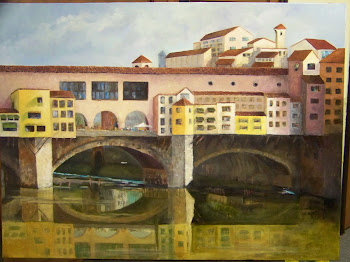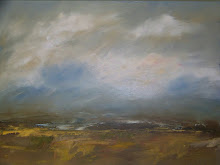 |
| A Smithfield Country Ham |
Today, a staple at almost every Thanksgiving table is pumpkin pie. But it is unlikely that the first feast included that treat. The supply of flour had been long diminished, so there was no bread or pastries of any kind. However, they did eat boiled pumpkin, and they produced a type of fried bread from their corn crop. There was also no milk, cider, potatoes, or butter. There were no domestic cattle for dairy products, and the newly-discovered potato was still considered by many Europeans to be poisonous. But we do know the feast included fish, berries, watercress, lobster, dried fruit, clams, venison, and plums.
In 1863, President Lincoln proclaimed the last Thursday in November as a national day of Thanksgiving. Since that time, our Thanksgiving table has evolved into a very traditional dinner. Influenced by food producers such as Campbell’s, we have our favorites that we feel are as important as the turkey. For instance, the Green Bean Casserole, that became a tradition at Thanksgiving, was invented in 1955 by the Campbell Soup Company test kitchen. It is not a favorite of mine, but I bet it is still present on at least 50% of America’s Thanksgiving tables! for that recipe, go to
http://www.campbellkitchen.net/RecipeDetail.aspx?recipeId=24099
Here in America, regional cooking influences the way we prepare our turkey dinner. American cuisine is not one cuisine, but numerous regional and ethnic cuisines reflecting immigration patterns. Take the whole stuffing/dressing debate. Is it white bread or cornbread? Is it full of apples and dried fruit or is it flavored with onions and celery? Is it seasoned with sage, or is it full of rosemary and thyme? Is it plump with smoked sausage or spicy with chorizo, or is it full of oysters? Or maybe it is the chestnut you want to bite into. It goes on and on!
I was born and raised in Missouri. It is right in the middle of the country, but is extremely southern in cooking traditions. To me, there is no dressing but my Grandmother Ogg’s cornbread dressing, full of butter, onions and celery.
We won’t even go into the discussion of “stuffing” the turkey with it or putting it in a casserole dish to be baked as “dressing”………
What we should go into is the discussion of Turkey….Ham….or Prime Rib…..
I am a huge fan of turkey gravy but can do without the turkey. What I do love are both ham and prime rib. In today’s economy I am sure I will choose ham over the prime rib. Besides, there will be leftovers with a full ham, something that won’t happen with the smaller piece of beef.
That decided, how do I choose a perfect ham? Raised on Boone County Country Ham, I would, naturally, choose a “country ham”. The finest country ham in the world is a Smithfield Country Ham, America’s version of Italy’s prosciutto. www.smithfieldhams.com
To understand what this type of ham actually is, go to You Tube and search the title “World’s Ham Capitol” to watch how America’s own Smithfield Hams are cured and prepared. While there, also check out “How to cook a Virginia ham.” Cooking a country ham is definitely different than cooking a city ham.
The wonderful thing about choosing a Smithfield Ham for your Thanksgiving dinner, is it goes beautifully with all of the traditional dishes of Thanksgiving…..sweet potatoes, green bean casserole, and oh my, what it does with cornbread dressing! So, there may not be gravy for your mashed potatoes and dressing….but that is simple to solve! Make this gravy ahead of time and reheat it right before serving….See…everything works out!
Thanksgiving Gravy
4 turkey wings (about 3lb.)
2 med. onions, peeled and quartered
1 c. water
8 c. chicken broth
3/4 c. chopped carrot
1/2 tsp. dried thyme
3/4 c. flour
2 Tbsp. stick butter or marg.
1/2 tsp. ground pepper
Heat oven to 400. Have ready a large roasting pan. Arrange wings in a single layer in pan; scatter onions over top. Roast 1 and 1/4 hrs. until wings are browned. Put wings and onions in a 5 to 6 quart pot. Add water to roasting pan and stir to scrape up any brown bits on bottom. Add to pot. Add 6 c. broth (refrigerate remaining 2 c.) the carrot and thyme. Bring to a boil, reduce heat and simmer, uncovered, 1 and a 1/2 hrs. Remove wings and when cool pull off meat. (can save meat for other use) Strain broth into a 3 qt. saucepan, pressing vegetables to extract as much liquid as possible. Discard vegetables; skim fat off broth and discard. Whisk flour into remaining 2c. broth until blended and smooth. Bring broth in pot to a gentle boil. Whisk in broth-flour mixture and boil 3-4 min. Stir in butter and pepper. Serve, or pour into containers and refrigerate up to 1 week or freeze up to 6 mos.





